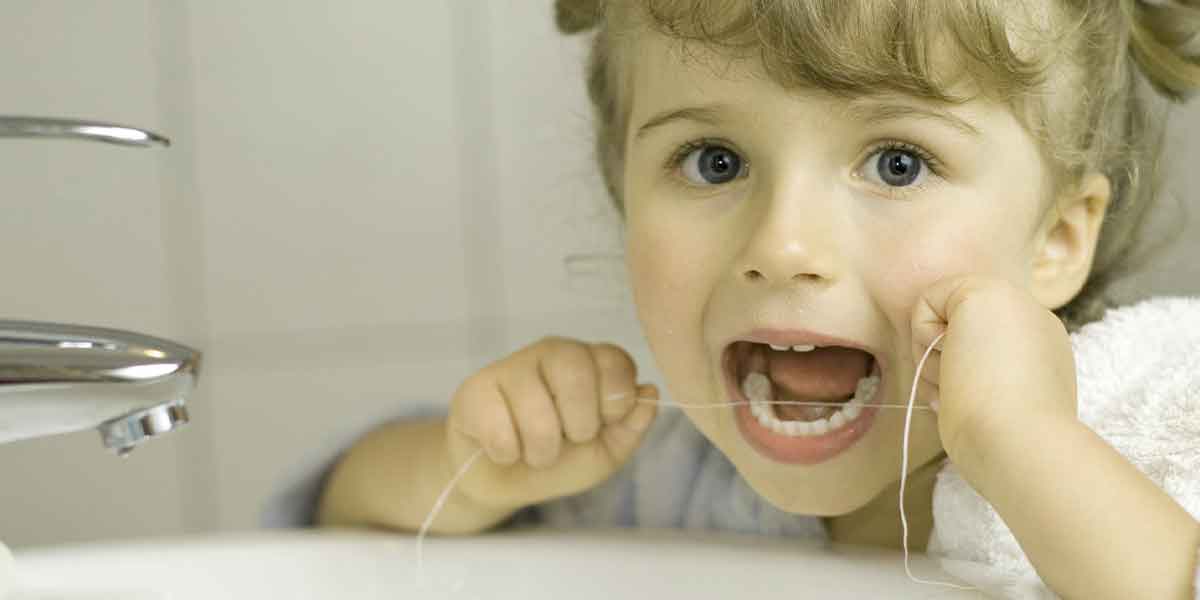Teaching children to floss their teeth is a crucial part of maintaining good oral hygiene. However, many parents have questions about when and how to introduce flossing into their child’s daily routine. In this article, we will address the top five questions parents ask about kids teeth flossing, providing essential tips and advice to ensure your child develops healthy flossing habits.
When Should Kids Start Flossing?
Flossing is an essential part of oral hygiene, as it helps remove plaque and food particles from between the teeth and along the gumline—areas that a toothbrush can’t reach. Parents often wonder when their child should start flossing.
Age to Begin Flossing
Children should start flossing when they have two teeth that touch. This usually occurs around the age of 2 to 3 years old. At this stage, parents should floss their child’s teeth for them, as young children do not yet have the dexterity to floss effectively on their own.
Building a Routine
Incorporating flossing into your child’s daily oral hygiene routine early on can help establish the habit. Flossing once a day is typically sufficient, and it can be done at any time of day, although many parents find it easiest to incorporate it into the nighttime brushing routine.
How Do You Floss a Child’s Teeth Properly?
Proper flossing technique is crucial to effectively remove plaque and prevent gum disease. Here are some steps to help you floss your child’s teeth correctly:
Choosing the Right Floss
There are various types of dental floss available, including traditional string floss, floss picks, and flossers designed specifically for children. Choose a type that is comfortable and easy for you to use on your child’s small teeth.
Steps for Flossing
Follow these steps to floss your child’s teeth effectively:
- Use about 18 inches of floss, winding most of it around your middle fingers and leaving a few inches to work with.
- Hold the floss tightly between your thumbs and forefingers.
- Gently guide the floss between your child’s teeth using a gentle sawing motion.
- Curve the floss into a C shape around each tooth and slide it under the gumline.
- Move the floss up and down to clean the sides of each tooth.
- Use a clean section of floss as you move from tooth to tooth.
Tips for Effective Flossing
- Be gentle to avoid injuring your child’s gums.
- Make sure to floss behind the back teeth.
- Encourage your child to be patient and thorough.
What if My Child Resists Flossing?
It’s not uncommon for children to resist flossing, especially when it’s a new addition to their routine. Here are some strategies to make flossing a more enjoyable and accepted part of their daily oral hygiene:
Make Flossing Fun
Turn flossing into a fun activity by using flavored floss or floss picks with fun designs. You can also make up a song or game related to flossing to keep your child engaged and motivated.
Lead by Example
Children are more likely to adopt good oral hygiene habits if they see their parents practicing them. Floss your teeth alongside your child to show them that flossing is a normal and essential part of dental care.
Offer Positive Reinforcement
Use positive reinforcement to encourage your child to floss. Praise them for their efforts and consistency, and consider implementing a reward system, such as a sticker chart, to track their progress and celebrate their successes.
Can Flossing Cause Damage to My Child’s Gums?
Parents may worry that flossing can hurt their child’s gums, especially if they see bleeding. Here’s what you need to know about flossing and gum health:
Proper Technique to Avoid Injury
When done correctly, flossing should not damage your child’s gums. It’s important to use a gentle touch and avoid snapping the floss between the teeth, which can cause injury. If you notice persistent bleeding, it may indicate gum inflammation or other dental issues, and you should consult your dentist.
Bleeding Gums
It’s normal for gums to bleed slightly when your child first starts flossing, as the gums are not used to the stimulation. However, if bleeding persists after a few days of regular flossing, it may be a sign of gum disease or improper flossing technique. In such cases, it’s important to seek advice from your dentist.
Are There Alternatives to Traditional Flossing?
If your child finds traditional flossing difficult or uncomfortable, there are alternative methods to clean between the teeth effectively:
Floss Picks and Flossers
Floss picks and flossers are convenient alternatives to traditional string floss. They are easier to handle, especially for young children, and can make the flossing process quicker and more manageable.
Water Flossers
Water flossers use a stream of water to remove plaque and food particles from between the teeth and along the gumline. They can be a good option for children who struggle with traditional flossing, although they should be used under parental supervision to ensure proper technique.
Interdental Brushes
Interdental brushes are small brushes designed to clean between the teeth. They are available in various sizes and can be a useful alternative for children with larger gaps between their teeth.
Conclusion
Flossing is a vital part of maintaining good oral hygiene for children. By starting early, using proper techniques, and making flossing a fun and positive experience, you can help your child develop healthy flossing habits that will benefit them throughout their life. If you have concerns about your child’s flossing or oral health, don’t hesitate to consult your dentist for personalized advice and guidance. With the right approach and tools, flossing can become a regular and stress-free part of your child’s daily routine.




